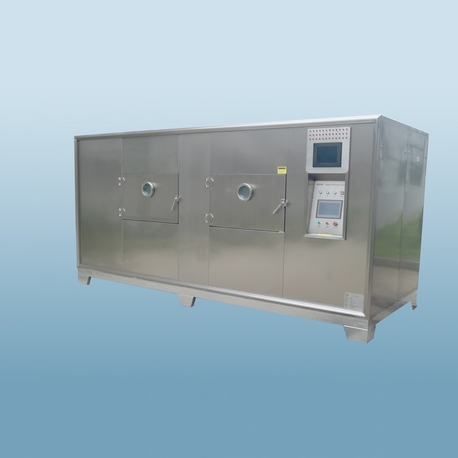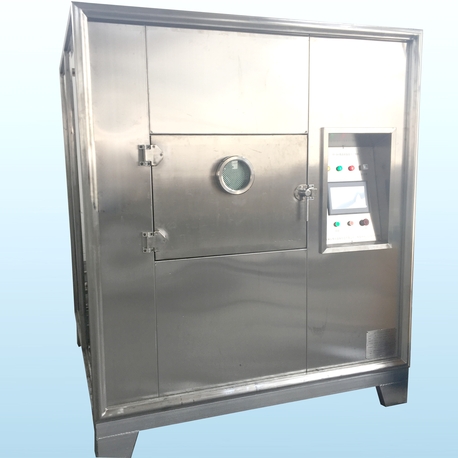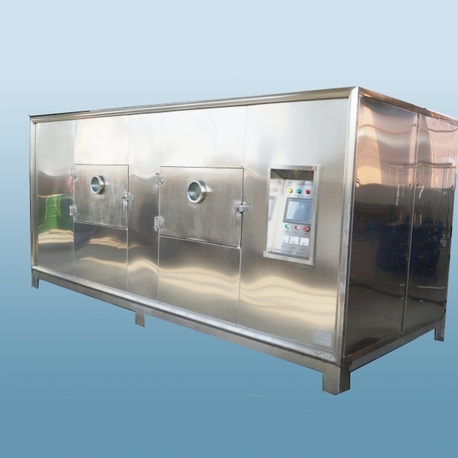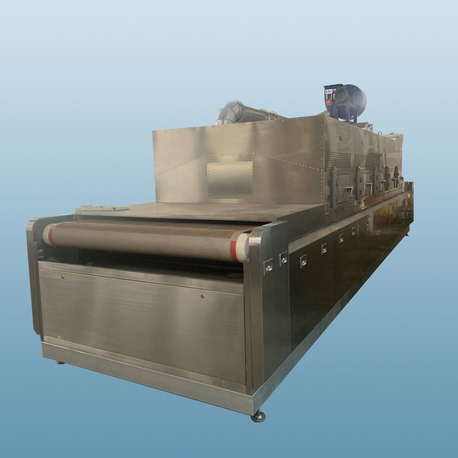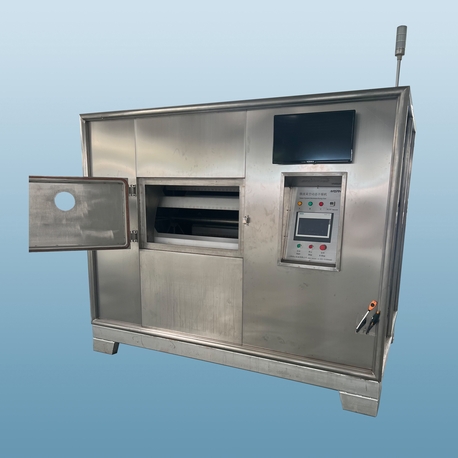If you're in the business of processing herbs, you know that the difference between a premium, market-ready product and a batch destined for compost often comes down to one piece of equipment: the industrial herb dehydrator. This isn't about the small countertop units you find in home kitchens. We're talking about the heavy-duty machines that handle hundreds of kilos of delicate basil, mint, or oregano, preserving their essential oils, color, and potency. Choosing the wrong system can be a costly error, impacting everything from your bottom line to your brand's reputation. In this article, we’ll walk through the most common pitfalls businesses face when selecting a commercial herb dehydrator and how to steer clear of them. We'll also glance at how manufacturers like Nasan approach these challenges in their dryer designs.

Not All Dryers Are Created Equal: What is an Industrial Herb Dehydrator?
An industrial herb dehydrator is a precision-engineered machine designed to remove moisture from large volumes of botanical material efficiently and uniformly. Unlike simple food dryers, a dedicated herb dehydrator must operate at lower temperatures and with specific airflow patterns to protect the volatile compounds that give herbs their aroma, flavor, and medicinal value. The core goal is to rapidly reduce moisture content to a safe level for storage and packaging—typically between 8-12%—without degrading the product. These systems range from multi-tray cabinet dryers to continuous belt dryers, incorporating advanced controls for temperature, humidity, and air velocity. Understanding that an herb dehydrator serves a unique purpose is the first step in avoiding the mistake of using a generic vegetable dryer for sensitive herbs.
Overlooking Temperature Sensitivity and Essential Oil Preservation
The single biggest mistake you can make is treating an herb dehydrator like a high-heat dryer for root vegetables. Herbs are notoriously delicate. Excessive heat will cook the plant material, destroying its essential oils and active constituents, leading to a brown, flavorless, and low-value product. A high-quality commercial herb dehydrator provides precise, low-temperature control, often operating between 30°C to 45°C (86°F to 113°F). This gentle drying process, often referred to as lyophilization in more advanced systems, is crucial for preserving the very qualities your customers are paying for. When evaluating an industrial herb dehydrator, scrutinize its temperature range and uniformity. Systems from experienced suppliers like Nasan, for instance, are engineered with sophisticated heat distribution to ensure every leaf dries evenly without being scorched.
Ignoring Airflow Design and Its Impact on Drying Uniformity
It’s not just about heat; it’s about how the air moves. Poor airflow design is a silent killer of product quality in an herb dehydrator. If air doesn't circulate evenly across all trays or through the entire bed of material, you'll end up with a single batch containing bone-dry, brittle herbs alongside damp, mold-prone ones. This inconsistency leads to waste, re-work, and customer rejection. An effective industrial herb dehydrator uses a balanced, horizontal or vertical airflow system that ensures every particle of oregano or parsley receives the same drying conditions. Look for features like adjustable fan speeds and strategically placed vents. The engineering behind a reliable herb dehydrator, such as those in the Nasan product line, often includes computational fluid dynamics (CFD) modeling to optimize air movement for maximum uniformity.
Sacrificing Capacity and Scalability for Short-Term Savings
Another common error is buying an herb dehydrator that only meets your current needs without considering future growth. You might save a few thousand dollars upfront on a smaller unit, but you'll quickly hit a production bottleneck. When a large harvest comes in or you land a new client, an undersized dehydrator can become a major constraint. When investing in a commercial herb dehydrator, think about your maximum batch size, projected growth over the next five years, and the machine's physical footprint. Modular systems or those that allow for easy capacity expansion offer much better long-term value. It’s a strategic decision that impacts your entire operation's scalability.
Underestimating the Total Cost of Ownership (TCO)
Many businesses focus solely on the purchase price of an industrial herb dehydrator, ignoring the total cost of ownership (TCO). This is a critical miscalculation. The TCO includes:
Energy Consumption: This is the biggest ongoing cost. Inefficient dehydrators can skyrocket your utility bills.
Labor Costs: How much manual loading and unloading is required? Automated systems save significant labor hours.
Maintenance and Spare Parts: What is the cost and availability of filters, belts, and heating elements?
Downtime: A machine that frequently breaks down costs you in lost production and rushed repairs.
An energy-efficient herb dehydrator, perhaps one utilizing heat pump technology, may have a higher initial price but can reduce energy costs by up to 60%, paying for itself over time. When reviewing options, ask suppliers like Nasan for estimated energy usage data and service contract details to build a realistic TCO model.
How to Vet Suppliers and Ensure After-Sales Support
The final mistake is choosing a supplier based on price alone, without considering their reputation and support network. An industrial herb dehydrator is a long-term investment, and you need a partner, not just a vendor. A reliable supplier will offer:
Technical Support: Access to engineers who can help with setup and troubleshooting.
Availability of Spare Parts: A global parts inventory to minimize downtime.
Installation and Training: On-site assistance to get your team up and running.
Warranty and Service Agreements: Clear terms that protect your investment.
Look for manufacturers with a proven track record in the food and pharmaceutical industries. Companies like Nasan have built their reputation not just on the quality of their drying machinery but also on a robust global support network that ensures your herb dehydrator remains operational for years to come.
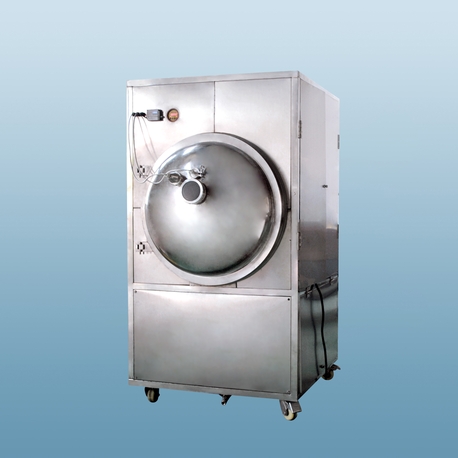
Making a Smart Investment in Dehydration Technology
Avoiding these five mistakes—ignoring temperature control, poor airflow, inadequate capacity, hidden costs, and weak supplier support—will put you on the path to selecting an industrial herb dehydrator that becomes an asset, not a liability. The right machine will enhance your product quality, improve your operational efficiency, and strengthen your market position. As you navigate the selection process, remember that the best choices are informed by a deep understanding of both your product's needs and the technology available. It's in this area that established brands like Nasan have focused, developing herb dehydrator solutions that address these very pitfalls directly.
Frequently Asked Questions (FAQs) About Industrial Herb Dehydrators
Q1: What is the average drying time in a commercial herb dehydrator?
A1: Drying time in a commercial herb dehydrator varies significantly based on the herb type, its initial moisture content, and the machine's technology. For leafy herbs like basil or mint, it can range from 4 to 10 hours. A machine with precise temperature and humidity control, like some Nasan dehydrator models, can often complete cycles faster by optimizing conditions throughout the process.
Q2: Can the same herb dehydrator be used for different types of herbs?
A2: Yes, a well-designed industrial herb dehydrator is versatile and can handle various herbs. However, it is crucial to adjust the drying parameters (temperature, time, and airflow) for each type. Creating and saving specific profiles for different products is a key feature of modern, automated dehydrators, ensuring optimal results for every batch.
Q3: How does a heat pump herb dehydrator differ from a conventional one?
A3: A conventional herb dehydrator uses electric or gas heaters and vents out the moist air. A heat pump herb dehydrator is far more energy-efficient; it works like a reverse air conditioner, extracting heat from the surrounding air and recycling the thermal energy within the chamber. This technology allows for precise low-temperature control and can cut energy consumption by more than half compared to traditional methods.
Q4: What are the key maintenance routines for an industrial herb dehydrator?
A4: Regular maintenance is vital. Key routines include daily cleaning of trays and filters to prevent cross-contamination and maintain airflow, weekly inspection of fans and belts for wear, and periodic calibration of temperature and humidity sensors. Following the manufacturer's scheduled maintenance plan, such as those provided with a Nasan herb dehydrator, is the best way to ensure longevity and consistent performance.
Q5: Is it cost-effective for a small to medium enterprise (SME) to invest in an industrial-grade herb dehydrator?
A5: Absolutely. While the initial investment is higher than for small-scale units, the ROI for an industrial herb dehydrator for an SME can be compelling. Benefits include higher throughput, superior product quality that can command premium prices, significant labor savings through automation, and reduced spoilage. Many suppliers offer scalable models suitable for growing businesses, making it a strategic and cost-effective investment.


